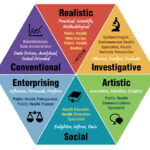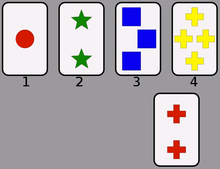Welcome to WordPress. This is your first post. Edit or delete it, then start writing!
Which UW- Green Bay Psychology Professor Are You?
Health Psychology at UW-Green Bay
UW-Green Bay Health Psychologists
 Dr. Regan A.R. Gurung
Dr. Regan A.R. Gurung
Dr. Gurung’s work investigates cultural differences in coping with stressors like HIV infection, pregnancy, and smoking cessation. He currently investigates ways to diffuse objectification and sexism, increase health, and fitness, and increase learning. He maintains an active research lab with student research assistants and I also support independent and honor studies.
- Contact him at: gurungr@uwgb.edu
- Visit his Website
Psychology and Stuff Podcast: Health Psychology Playlist
Introduction to Health Psychology (Video)
Which Food Are You?
Health Psychology Quiz
Psychological Testing
Psychological tests are objective and standardized measures of a sample of behavior. Psychological tests are objective in how they are administered and scored. Psychological tests are used in a variety of settings like educational settings, clinical settings, organizational settings, and research settings. There are five major categories of psychological tests:
- Achievement tests
- Measure learning in a specific academic area
- Examples: ACT, GRE, tests in school
- Personality tests
- Used to diagnose personality disorders (clinical) or describe a person (non-clinical)
- Examples: Woodworth Personal Data Sheet (objective), MMPI (objective), NEO-PI-3 (objective), EPPS (objective), Rorschach Inkblot Test (projective), Thematic Apperception Test (projective)
 Rorschach Inkblot Test Example Card
Rorschach Inkblot Test Example Card
- Interests and attitudes
- Used for career development
- Examples: Strong Interest Inventory, Holland-based tools, CareerLocker Assessment Tools, MBTI Career Report, Career Genogram
 Strong Interest Inventory Categories
Strong Interest Inventory Categories
- Neuropsychological tests
- Measures brain functioning in clinical settings
- Examples: Halstead-Reitan Neuropsychological Battery, Mini-Mental State Exam (MMSE), Wisconsin Card Sorting Test, Bender Visual-Motor Gestalt Test

Wisconsin Card Sorting Test Example. You have to figure out if the sorting rule is by color, shape, or number.
- Mental ability tests
- Measures intelligence (IQ), creativity, and problem-solving
- Used in screening for learning disabilities and giftedness
- Examples: Stanford-Binet, WAIS
Hogan, T. P. (2013). Psychological testing: A practical introduction. (Third Edition). Hoboken, NJ: John Wiley and Sons.
Make a Change: Changing Community Health by Interventions
What is an intervention?
Interventions are specific programs designed to assess levels of behavior, introduce ways to change them, measure whether a change has occurred, and assess the impact of the change. Health psychologists use interventions for two main purposes: to change a person’s attitudes to change his or her behavior, or to attempt to change his or her beliefs or intentions.
There are ten factors necessary to have a successful intervention:
- Interventions should be based on theory: A theory helps focus attention on the most important factors at hand. Possible theories include Social Cognitive Theory, Transtheoretical Model/Stages of Change, the Health Belief Model, and the Theory of Planned Behavior. Interventions based on theory have a better chance of being useful in the long run.
- Intervene at the appropriate level: Do you want to intervene at a city level? State level? Neighborhood? Families? Individuals? The level you choose to intervene at should be appropriate to the apparent problem. Perhaps this problem only affects at-risk teens. Maybe the problem affects only people who live in a certain area. Whatever it is, target the right market.
- Size matters: Size can refer to the duration of the intervention and to the intensity of the intervention. Longer interventions are more likely to lead to long-term behavior change. In many studies, rates of high-risk behavior increase when interventions are ended. The size of the intervention is related to the extent of change made.
- Interventions should target people at risk: When the intervention is not made at the appropriate level, time and money are wasted. It is worth the time to make an attempt to find the correct target for the intervention. The more an intervention is tailored to the individuals at risk, the more likely it will work.
- Interventions should be appropriate for the risk group/risk factor: Interventions should be designed to speak to the at-risk group. For example, if you are targeting a certain age or sex or ethnic group, it would not make sense to speak in a language they would not understand. For example, if you want to target the level of inactivity in sixth-grade gamer boys, it would not make sense to talk to them at the level of a college graduate. To appeal to a group, an intervention must use terminology, images, or styles familiar to the group.
- Be sure your intervention does only what you want it to do: Sometimes an intervention can have unintended effects. One example of this was a study of norming health behaviors. An intervention aimed at moving people toward the norm had a negative effect on those whose behaviors were healthier than the norm (Schultz, Nolan, Cialdini, Goldstein, & Griskevicius, 2007).
- Preventing dropouts should be a priority: There are two big reasons that dropouts are an issue. First, the participant is not getting the entire treatment. Second, dropouts do not let us completely assess the intervention.
- Be ethical: Researchers must respect participants’ rights and refrain from using deception or making false claims about the unhealthy or healthy behavior.
- Be culturally sensitive: Researchers must pay attention to the symbols and language used in interventions. What may be perfectly fine in one culture might be very inappropriate in another. For example, the swastika is a symbol of good luck for Hindus but may offend the Jews.
- Prevent relapse: One of the biggest problems in health behavior change is maintaining the new behavior. Interventions should provide participants with the cognitive and behavioral skills to maintain the behavior change.
Schultz, P., Nolan, J.M., Cialdini, R. B., Goldstein, N. J., & Griskevicius, V. (2007). The constructive, destructive, and reconstructive power of social norms. Psychological Science, 18 (5), 429-434.doi:10.1111/j.14679280.2007.0917.x
Gurung, R. A. R. (2014). Health Psychology: A Cultural Approach, Third Edition. Belmont, CA: Wadsworth.
Tips for Coping with Stress
“There is nothing either good or bad, but thinking makes it so.” – William Shakespeare
What is stress, really? We often say we feel stressed or overwhelmed. The simplest way to describe stress is the upsetting of homeostasis or the upsetting of what we consider normal. Stress is an individualized experience. What stresses one person out may be considered boring to another. Why do these differences exist? Richard Lazarus and Susan Folkman (1984) suggest that way we think about stressors influence our responses.
Lazurus and Folkman (1984) created the Cognitive Appraisal Model to explain the mental processes that influence how we cope with stressors. According to this model, we initially react to a stressor with our primary appraisal. Do we see it as a harm that will do us immediate damage, a threat that will cause us future damage, or a challenge that can be overcome? We create this label based on the resources we think we have to deal with the stressor. Assessing our resources is part of the secondary appraisal. You subconsciously ask yourself, are my resources sufficient? Can I use them well/will they work? You experience distress when you perceive that your coping ability is not enough to deal with the threat.
But how do you become a better cope-r? Like Shakespeare said, thinking really does make a difference. Viewing the stressor as a challenge that can be overcome using your available resources lessens the feeling of negative stress. Your locus of control is closely tied to this. People with an internal locus of control (the belief that you have power over the outcome) tend to cope better. You can also replace stress-provoking thoughts with realistic, unthreatening thoughts. This gives you a sense of control over the appraisal of the stressor.
If you are stressed, take some time off. Reduce your cognitive load and let your chemical levels settle. Talking to someone about your stressors can also be a good way to cope. And of course, the classic, R-E-L-A-X. Focus on breathing slowly and relaxing muscles. Try meditation or guided imagery, like the video below.
Gurung, R. A. R. (2014). Health Psychology: A Cultural Approach, Third Edition. Belmont, CA: Wadsworth.